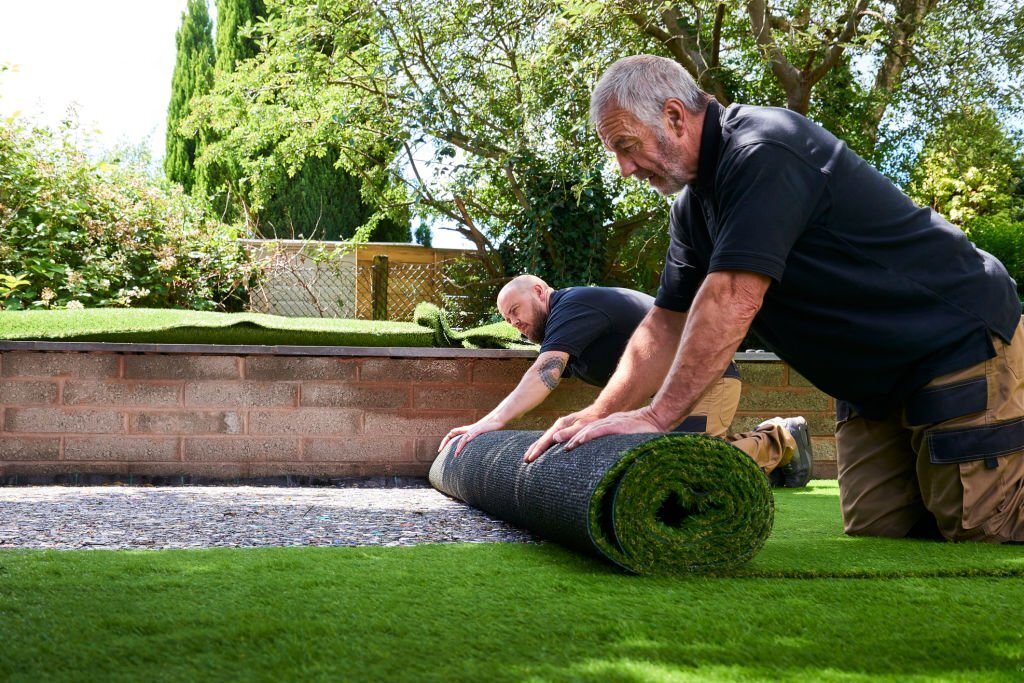Creating a safe and enjoyable play area for kids is a priority for parents and childcare providers. Artificial grass has become increasingly popular when choosing flooring for children’s play areas due to its numerous advantages over natural grass. This blog will explore three reasons artificial grass is superior for kids’ play areas.
3 Key Reasons Why Artificial Grass Is Better Than Natural Grass for Kid’s Play Areas
There are three key reasons why artificial grass is favored over natural grass:
Safety and Durability
One of the primary concerns for parents is the safety of their children while playing. Artificial grass offers several safety benefits compared to natural grass:
- It helps to create a more even surface, reducing the risk of tripping, falling, and injuries caused by uneven terrain.
- Synthetic grass is thicker than natural grass and provides better cushioning, minimizing the impact of falls. It is essential as falls are one of the leading causes of playground injuries.
- Artificial grass eliminates the concern of muddy or slippery surfaces after rain, reducing the risk of slips and falls.
Low Maintenance
Natural grass requires significant time and effort to maintain. It needs regular mowing, watering, weeding, and fertilizing to keep it healthy and looking good. However, artificial grass eliminates these maintenance tasks. It does not require mowing, watering, or using pesticides or fertilizers, making it more eco-friendly and reducing exposure to harmful chemicals. Artificial grass is designed to withstand heavy foot traffic, ensuring durability even in high-use areas like play areas.
All-Weather Utility
Unlike natural grass, which can become muddy and unsuitable for play during wet weather, artificial grass offers a versatile play surface that can be used in all weather conditions. It drains efficiently, preventing water from pooling on the surface and ensuring quick drying. It allows children to enjoy their playtime without worrying about getting dirty or restricting their activities due to wet ground conditions. Artificial grass is also resistant to extreme weather conditions.
Understanding the Distinctions Between Artificial Grass and Natural Grass
Artificial grass and natural grass differ in appearance, maintenance, cost, and environmental impact. Here are the key distinctions between artificial grass and natural grass:
Appearance
Natural grass: It has a lush, organic appearance with variations in color and texture. The shade of green may change based on climate, season, and maintenance practices.
Artificial grass: It is designed to resemble natural grass and comes in various shades of green. The blades are uniform in length and texture, providing a consistent and manicured look.
Maintenance
Natural grass: It requires regular maintenance, including mowing, watering, fertilizing, and weeding. Additionally, natural grass may need reseeding or sod replacement to repair bare patches.
Artificial grass: It requires minimal maintenance compared to natural grass. It does not need mowing, watering, or fertilizing. However, occasional brushing and rinsing to remove debris and maintain an upright position of the blades may be necessary.
Durability
Natural grass: It can be susceptible to wear and tear, especially in high-traffic areas. Heavy usage, adverse weather conditions, and disease or pest infestations can impact its durability.
Artificial grass: It is designed to withstand heavy foot traffic and is more durable than natural grass. It resists weather conditions and does not fade or develop bare spots with time.
Cost
Natural grass: The initial cost of installing natural grass includes purchasing sod or grass seed, soil preparation, irrigation systems, and ongoing maintenance expenses. These can add up over time.
Artificial grass: The upfront cost of installing artificial grass is generally higher than natural grass. However, it eliminates the need for ongoing expenses like watering, mowing, and fertilizing, resulting in long-term cost savings.
Environmental Impact
Natural grass: It requires significant water resources for irrigation, contributing to water consumption. Regular fertilizers and pesticides can have environmental implications, including water pollution.
Artificial grass: It conserves water as it does not require irrigation. Additionally, it eliminates the need for chemical fertilizers and pesticides, reducing potential environmental harm.
Conclusion
Artificial grass offers significant advantages over natural grass in creating a safe and enjoyable play area for kids. Its safety features, low maintenance requirements, and all-weather utility make it an excellent choice for parents and childcare providers. By opting for artificial grass, parents can provide their children with a durable, low-risk, and visually appealing play surface that enhances their playtime experience while minimizing the maintenance efforts and environmental impact associated with natural grass.
Contact Artificial Grass NYC at (877) 319-2022. Our team of professionals is ready to help you with artificial turf installation for any size project. We offer the most affordable & reliable services in town!













